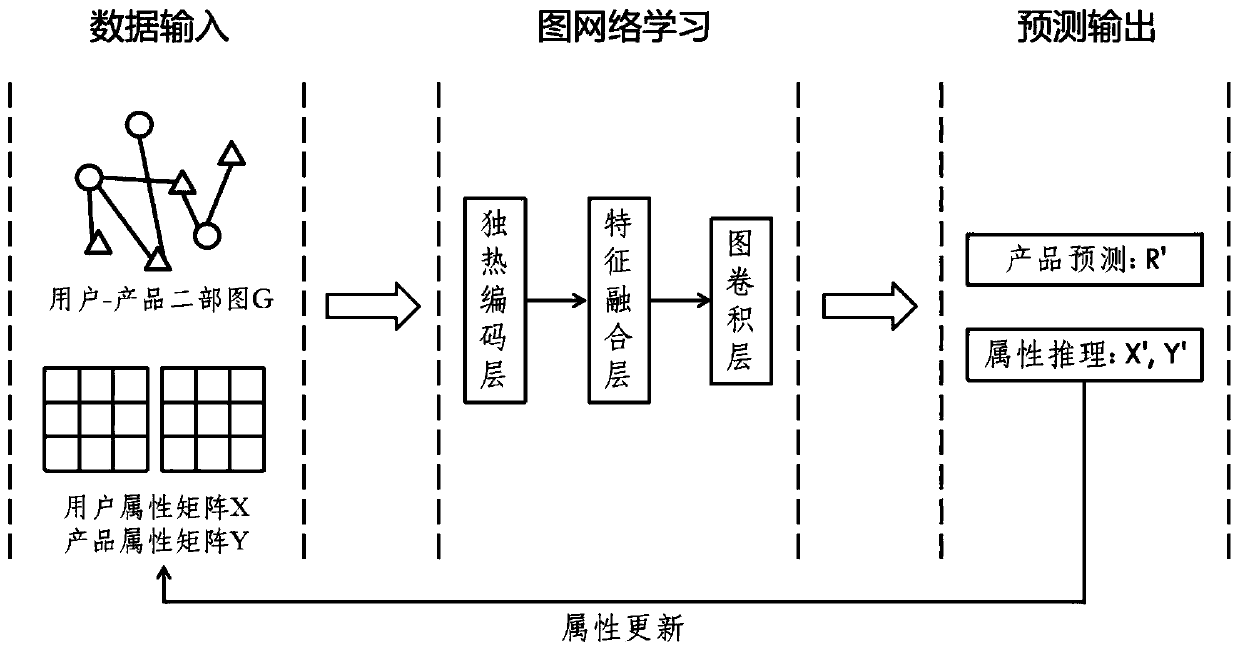Attribute reasoning and product recommendation method based on adaptive graph convolutional network
A convolutional network and self-adaptive technology, applied in reasoning methods, neural learning methods, biological neural network models, etc., can solve problems such as the need to improve the accuracy of attribute reasoning
- Summary
- Abstract
- Description
- Claims
- Application Information
AI Technical Summary
Problems solved by technology
Method used
Image
Examples
Embodiment
[0105] In order to verify the effectiveness of this method, the present invention uses three public datasets commonly used in recommendation systems: Amazon-Video Games, Movielens-1M, and Movielens-20M. Each dataset screens users with less than 5 rating records, and randomly deletes 90% of the records for each attribute as training data.
[0106] For the product recommendation task, the present invention uses Hit Ratio (HR) and Normalized Discounted Cumulative Gain (NDCG) as evaluation criteria. In the present invention, 5 methods are selected for effect comparison, namely BPR, FM, BLA, NGCF, and PinNGCF. Specifically, Table 1, Table 2, and Table 3 respectively show the experimental results on the Amazon-Video Games, Movielens-1M, and Movielens-20M data sets. It can be seen that on the three data sets, the method proposed by the present invention is better than HR Both indicators of NDCG and NDCG are better than the five comparison methods.
[0107] Table 1 The product recom...
PUM
 Login to View More
Login to View More Abstract
Description
Claims
Application Information
 Login to View More
Login to View More - R&D
- Intellectual Property
- Life Sciences
- Materials
- Tech Scout
- Unparalleled Data Quality
- Higher Quality Content
- 60% Fewer Hallucinations
Browse by: Latest US Patents, China's latest patents, Technical Efficacy Thesaurus, Application Domain, Technology Topic, Popular Technical Reports.
© 2025 PatSnap. All rights reserved.Legal|Privacy policy|Modern Slavery Act Transparency Statement|Sitemap|About US| Contact US: help@patsnap.com



